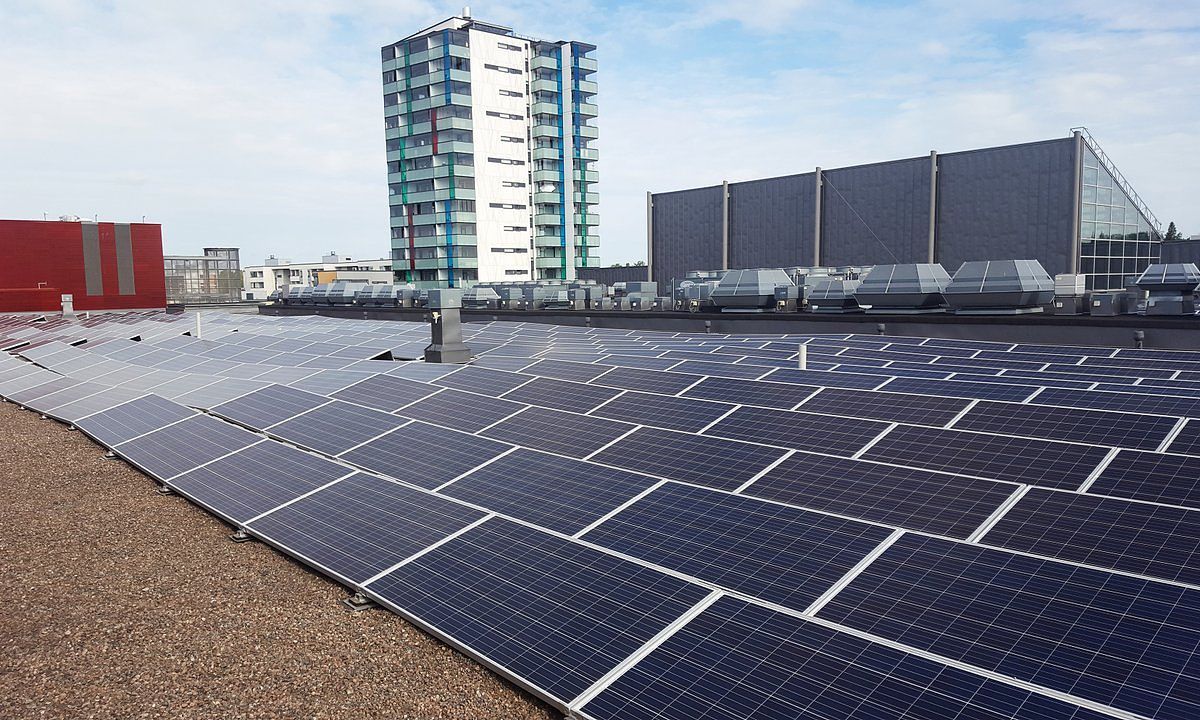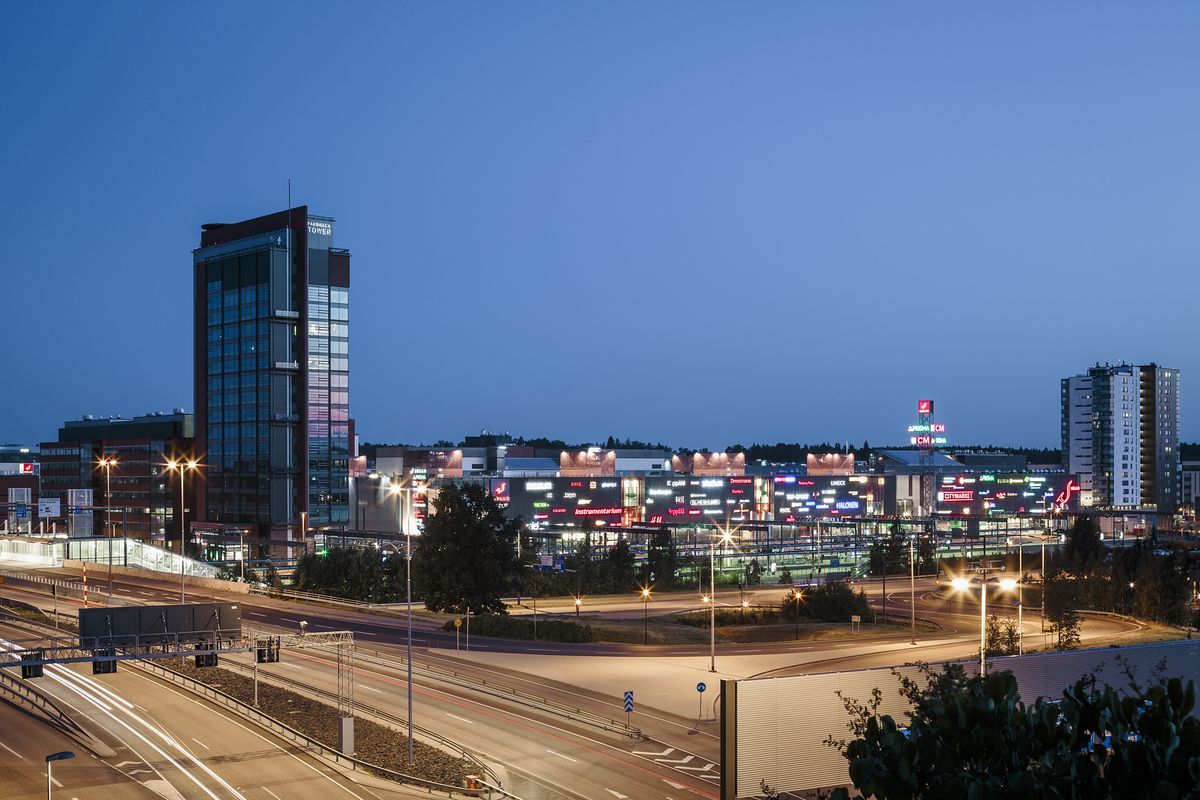Sello shopping centre has its own virtual power plant: there’s nothing like it anywhere else
Sello in Leppävaara, Espoo, is Finland’s biggest shopping centre. The centre strives to achieve energy efficiency and a low carbon footprint, and is also active in the electricity market. The virtual power plant developed and maintained by Siemens optimises energy consumption and reduce the load on the main grid.
Southern Finland’s warm and sunny early summer was a pleasant surprise for many people. One of them was Olli Paunola, the property manager at Sello shopping centre. The solar panels on the roof play an important role in Sello’s unique and more self-sufficient energy system.
Cloudless hot days have clearly reduced the amount of energy purchased externally.
“In practice, every sunny day generates a clear financial saving for us,” Paunola said.
Sello has intentionally focused on energy efficiency for many years. This has been recognised with the European Energy Service Award and a platinum LEED environmental rating, which Sello was the first shopping centre in Europe to receive in 2015.
Siemens is using its expertise to build a more self-sufficient energy unit in the shopping centre, which is one of the largest in the Nordic countries, in terms of both volume and surface area. The unit does not simply purchase and consume electricity – it stores it, too, smoothing out spikes in demand on the national grid.

Every sunny day generates savings. The shopping centre can store electricity in its own bank of accumulators, and use it during spikes in demand or when the market price of electricity goes up.
Accumulators balance energy use
Siemens maintains the system, which is made up of a microgrid based on Sello’s building technology, a 550 kWp solar panel system, intelligent LED lighting, and about 2 Mw in electricity storage capacity. The system helps the shopping centre to automatically optimise not just its energy consumption, but also its energy purchasing.
“We are storing electricity for the shopping centre’s own bank of accumulators, which is the largest of its kind in Northern Europe. We can take advantage of the system to respond to occasional peaks in consumption or increases in the market price of electricity. This means that the shopping centre can use electricity flexibly depending on grid consumption.
Electricity storage generates significant energy savings for Sello, equivalent to the electricity needed to heat 20 detached houses each day during winter.
“We use the accumulators when the price of electricity is high. The energy generated from solar panels is usually used directly, which reduces the need to purchase electricity and thus energy costs. If we produce more solar energy than we use, we store it in the accumulators,” Paunola said.
Significant annual savings
The accumulators can be recharged at night with cheap spot electricity and the stored energy can be used during the day, when the purchase price of electricity is higher.
“In practice, we were able to halve the repayment period for our investment in renewable energy production. We’re talking hundreds of thousands of euros saved every year,” the property manager said.
In 2010, Sello’s annual energy consumption was 34 GWh, and now it is already less than 28 GWh. CO2 emissions have dropped, too.
“Energy conservation is an important way of managing the running costs of the property, including upward pressure on rents. Sello’s customers and tenants are more and more concerned about environmental issues and carbon footprint,” Paunola stressed.
The Siemens service solution has reduced maintenance costs; all 3,000 light bulbs in the shopping centre have been replaced with energy-saving ones.

The accumulators can be recharged at night with cheap electricity and the stored energy can be used during the day.
A step forward in renewable energy
The head of Siemens’ building efficiency unit, Anssi Laaksonen, has spent the last couple of years learning all about how intelligent building technology works in the Sello shopping centre. He describes the Sello virtual power plant as a groundbreaking project, which has attracted interest internationally. There’s nothing like it anywhere else.
“This is a really Finnish solution – Fingrid smart grids made it possible. We provide the whole system, including maintenance, as an all-in-one service,” Laaksonen said.
As the project progresses, appetite for it has increased, although it requires more effort now to find new energy savings and improvements.
“The work is really getting more challenging every day. It’s usually easy to make the first 10 to 15 percent of energy savings, but it gets much more difficult after that,” he said.
The Finnish team at Siemens have also pushed the project’s development prospects forward. In the next few years, virtual power plants in smart buildings will reduce the need for traditional backup power and open the doors for local wind and solar energy.
“The Ministry of Employment and the Economy realised this, and approved priority funding for the Sello project.” Our goal is to implement similar projects in the next few years,” Laaksonen added.
A long-term partnership
The Sello shopping centre in Leppävaara, Espoo, is the largest in Finland.
Sello has over 170 shops and services, about 24 million visitors a year and total annual sales of about €400 million. Sello is owned by two mutual pension insurance companies, Elo and Ilmarinen.
Siemens and Sello started working together in 2003, when Siemens provided the building automation system for the shopping centre, while it was still under construction. The property has been enhanced since then by an extensive energy management system and a number of joint projects. These include a predictive heating system for outdoor areas and entrances, based on the weather conditions.
Besides energy savings, indoor air quality in the restaurants and commercial spaces has been improved, increasing customer comfort